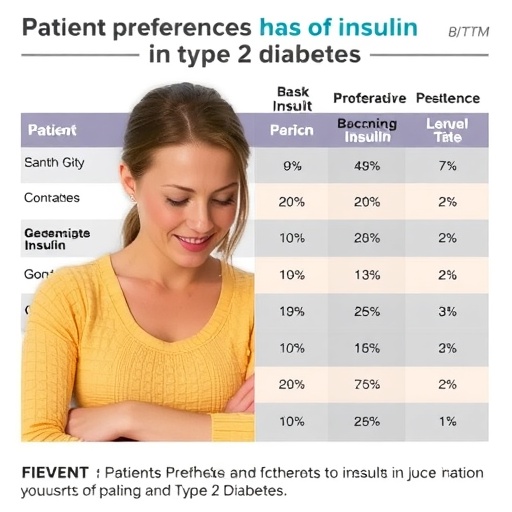
The research surrounding perioperative oncology has taken a significant leap forward, particularly in the context of non-small cell lung cancer (NSCLC), as highlighted in a groundbreaking publication by Huang et al. This study aims to assess phase contributions in the continuum of cancer care, emphasizing the critical importance of understanding how various treatment phases impact patient outcomes. The authors make a compelling case for a systematic evaluation of this contribution, which could lead to enhanced optimization of clinical practices and improved patient management.
At the core of this research is the recognition that the perioperative period—encompassing pre-operative, operative, and post-operative phases—plays a pivotal role in overall cancer treatment efficacy. Within the scope of NSCLC, which remains one of the leading causes of cancer-related deaths globally, the integration of well-defined assessment metrics during these phases is crucial. Huang and colleagues meticulously analyze existing literature to identify gaps in current practices and propose a structured framework for evaluating phase contributions.
One of the significant findings of the study is the variance in treatment protocols between different healthcare settings. Such discrepancies can lead to inconsistent patient outcomes, highlighting the necessity for standardized approaches in perioperative oncology. By focusing on NSCLC, the authors draw attention to how surgical interventions, chemotherapy, and emerging immunotherapies can synergistically work together or detrimentally interact when not carefully managed within these defined phases.
Moreover, the authors underscore the importance of multidisciplinary teams in addressing the complex needs of NSCLC patients during the perioperative phase. The collaboration among surgeons, medical oncologists, radiation oncologists, and supportive care providers can significantly influence treatment results. This collaborative effort not only enhances the quality of care but also fosters an environment where data collection and assessment on phase contributions can be streamlined, enabling better research outcomes and patient monitoring.
The paper also discusses the application of advanced imaging techniques and biomarkers in evaluating the effectiveness of treatments during the perioperative period. These technological advancements can potentially revolutionize how clinicians assess tumor response to therapies, providing real-time data that informs decision-making. By incorporating these tools, the proposed assessment framework allows for more precise tailoring of treatments to individual patient needs, maximizing therapeutic effectiveness while minimizing unnecessary side effects.
Another crucial aspect addressed in the research is patient engagement and education. As patients navigate their cancer journeys, understanding the importance of the perioperative phase becomes essential. Educated patients are more likely to participate actively in clinical trials and adhere to treatment protocols, which can lead to better outcomes. The authors argue that enhancing communication strategies between healthcare providers and patients regarding the significance of each treatment phase can foster greater compliance and result in improved prognoses.
In terms of broader implementation of the proposed assessment framework, Huang et al. outline several strategies. These include the establishment of national databases for tracking patient outcomes, the training and education of healthcare providers on the significance of phase contributions, and advocating for policy changes that support the integration of these findings into clinical practice. By promoting a culture of continuous learning and adaptation within healthcare systems, the proposed framework can become a foundational element in the fight against NSCLC.
The implications of this research extend beyond NSCLC, suggesting that the assessment of phase contributions can be applied to various cancers. Huang and colleagues encourage the scientific community to adopt similar methodologies in the study and management of other malignancies. This approach can potentially lead to a paradigm shift in how perioperative care is conceptualized and executed across the oncology landscape.
Moreover, the researchers emphasize the need for ongoing studies that validate the proposed framework across diverse patient populations and clinical settings. Including varied demographic groups in future trials is vital for ensuring that the findings are applicable and beneficial to a broad spectrum of patients. Such inclusivity will strengthen the framework’s credibility and help in standardizing care practices across an even wider array of cancer types.
As the discourse around cancer treatment continues to evolve, the insights provided by Huang et al. serve as a catalyst for re-examining existing paradigms in perioperative oncology. The call for a structured assessment of phase contributions is not merely a suggestion but a necessary evolution in the quest for optimal treatment modalities. Engaging with this study can equip oncologists and healthcare providers with the knowledge needed to enhance patient outcomes and pave the way for future innovations in cancer care.
In summary, the research led by Huang, Han, and Tang is a crucial step towards refining the approach to perioperative oncology, carrying significant implications for how NSCLC and potentially other cancers are managed. The persuasive arguments presented regarding the necessity for phase contribution assessment speak volumes about the future direction of oncology practice. As the healthcare community grapples with the complexities of cancer treatment, studies like this offer a path forward, fostering a deeper understanding of the interplay between different therapeutic phases and their impact on patient care.
Through a collective commitment to implementing evidence-based practices and embracing multidisciplinary collaboration, the vision outlined by Huang et al. has the potential to reshape the landscape of oncology. As this framework gains traction, it is hoped that outcomes for patients with NSCLC and other malignancies will reflect the power of coordinated care, strategic assessment, and innovative treatment practices.
Subject of Research: Phase Contribution Assessment in Perioperative Oncology
Article Title: Toward phase contribution assessment in perioperative oncology: insights from NSCLC and a proposal for broader implementation
Article References: Huang, HY., Han, YJ., Tang, Y. et al. Toward phase contribution assessment in perioperative oncology: insights from NSCLC and a proposal for broader implementation.
Military Med Res 12, 43 (2025). https://doi.org/10.1186/s40779-025-00622-2
Image Credits: AI Generated
DOI: 10.1186/s40779-025-00622-2
Keywords: perioperative oncology, NSCLC, treatment phases, multidisciplinary approach, standardization, patient outcomes, imaging techniques, biomarkers, patient engagement.
Tags: cancer care continuumclinical practice optimizationgaps in cancer treatment practicesinsights from Huang et al. studynon-small cell lung cancer treatmentoperative phase in lung cancerpatient outcomes in NSCLCperioperative oncology researchphase contributions in cancer carepost-operative management in oncologypre-operative assessment in cancerstandardized treatment protocols




